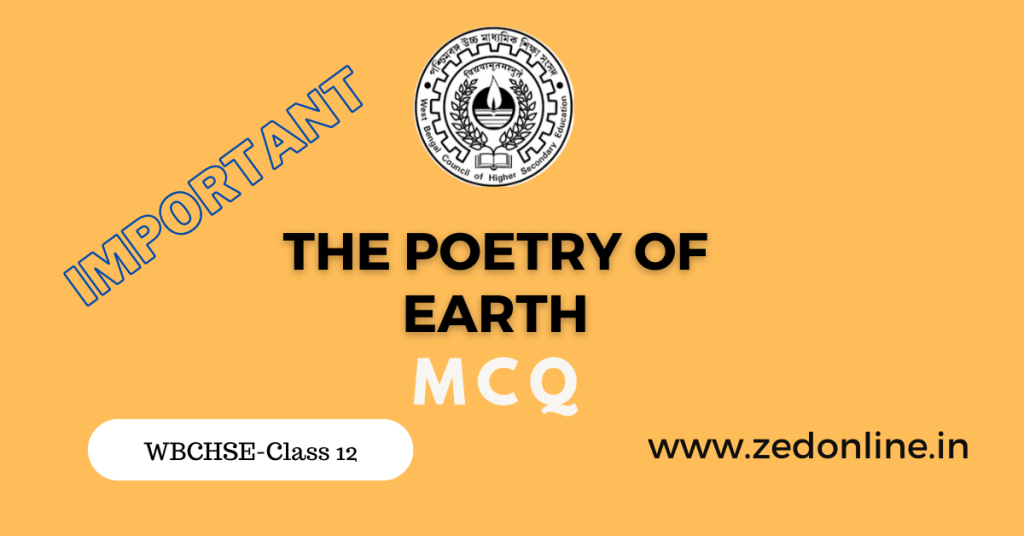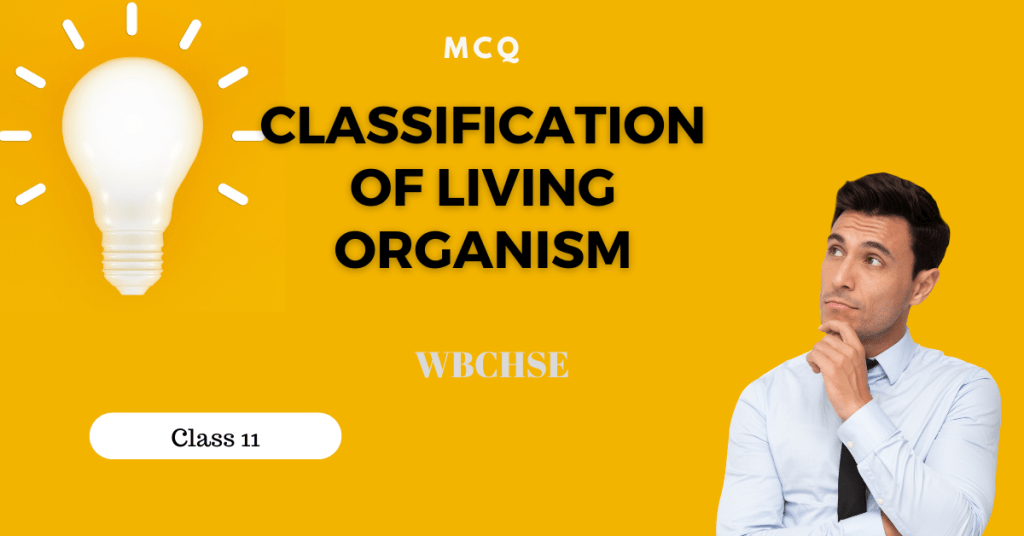Important Ancient and Medieval period MCQ History class 11 for W.B board and Competitive exams.learning of Multiple choice questions are important to secure good marks in the exam.
Table of Contents
Choose the correct answer from the alternatives given:
1. In which age did man become a food producer?
a) Stone age
b) Paleolithic age
c)New stone age
d) Iron age.
Answer: C) New stone Age.
2. The most important characteristic of the tools of the Mesolithic age was:
a) Very small size
b) very large size
c) Fragility
d) Length.
Answer: a) Very small size
3. In which age was the potter’s wheel invented?
a) Paleolithic age
b) Mesolithic age
c) Neolithic age
d) Chalcolithic age.
Answer: c) Neolithic age
4. Which ancient civilization used the cuneiform script?
a) Egypt
b) Sumer
c) Babylon
d) India.
Answer: b) Sumer
5. Which ancient civilization used the hieroglyphic script?
a) Egypt
b) Sumer
c) Greece
d) Mesopotamia.
Answer: a) Egypt
6. Rajtarangani is a historical account of
a) Kashmir
b) Gujrat
c) China
d) Sumer
Answer: a) Kashmir
7. The author of Indika was
a) Polybius
b) Megasathenes
c) Herodotus
d) Thusyclides.
Answer: b) Megasathenes
8. During the Harappa age, the people
a) Lived in caves
b) carried out agriculture
c) knew the use of iron
d) used coins.
Answer: b) carried out agriculture
9. In the pre-history age man
a) Did know writing
b) knew agriculture
c) knew the use of iron
d) carried out foreign trade.
Answer: a) Did know writing
10. In the earlier stage of civilization, man
a) used iron tools
b) used copper tools
c) used bronze tools
d) used stone tools.
Answer: d) used stone tools.
11. Ancient Egyptians invented
a) How to write on papyrus
b)The cuneiform script
c) paper
d) modern script.
Answer:a) How to write on papyrus
12. In the Paleolithic age, man was
a) a food gatherer
b) a food producer
c) a food storer
d) one who prepared food.
Answer:a) a food gatherer
13. ‘Gligamesh’ is an epic of the
a) Indians
b) Mesopotamian
c) Egyptians
d) Greeks.
Answer: b) Mesopotamian
14. James Mill was a …………..historian
a) British
b) German
c) Greek
d) Russian.
Answer: a) British
15. Ancient man used hand-axes in the
a) Paleolithic age
b) Mesolithic age
c) Neolithic age
d) copper-stone age.
Answer: a) Paleolithic age
16. The meaning of the term ‘Homo habills’ is
a) Erect man
b) Skillful man
c) Intelligent man
d) The great Ape.
Answer: b) Skillful man
17. “Homo erectus” means
a) Erect man
b) skillful man
c) Intelligent man
d) The great Ape.
Answer: a) Erect man
18. The fossils of Peking Man were discovered
a) Louis Leakey
b) Johan Andersson
c) Elwyn Simons
d) Pel Wen Chung.
Answer: b) Johan Andersson
19. Modern man first appeared on earth in:
a) Asia
b) Africa
c) Europe
d) Australia.
Answer: b) Africa
20. Ancient man first domesticated
a) Cows
b) Goats
c) Dogs
d) Horses.
Answer: c) Dogs
21. Mahenjo-Daro is located on the bank of river
a) Indus
b) Ravi
c) Sutlej
d) Beas.
Answer: a) Indus
22. In which Harappan site has a bathroom been discovered?
a) Harappa
b) Mahenjo-daro
c) Lothal
d) Kalibangan.
Answer: b) Mahenjo-daro
23. The great granary of the Harappan civilization was discovered in
a) Harappa
b) Mahenjo-daro
c) Lothal
d) Kalibangan.
Answer: a) Harappa
24. Egypt was describe as ‘the gift of the Nile’ by
a) Herodotus
b) Thucydides
c) Pliny
d) Diodotus.
Answer: a) Herodotus
25. In the Paleolithic Age, man
a) Lived by fishing alone
b) ate fruit and roots
c) Lived by hunting and gathering fruits and roots
d) only collected bird’s egg
Answer:c) Lived by hunting and gathering fruits and roots
26. In the Mesolithic Age, man
a) Used tiny tools made of stone
b) Used very large stone tools
c) Made tools of metal
d) Made tools of bronze.
Answer: b) Used very large stone tools
27. The foremost of the Neolithic age was
a) Discovery of iron
b) Discovery of cooper.
c) Making of bronze
d) Beginning of agriculture.
Answer: d) Beginning of agriculture.
28. The Neolithic age was followed by
a) Cooper stone age
b) Iron age
c) Mesolithic age
d) Ice age.
Answer: a) Cooper stone age
29. The Pleistocene Age began ………… years ago
a) 30 lakh
b) 26 lakh
c) 10 lakh
d) 1 lakh.
Answer: b)26 lakh
30.The Pleistocene Age ended…………………. years
a) 1, lakh
b) 50,000
c) 11,7600
d) 10,000
Answer: c) 11,7600
31. Harappan was located on the …………………river
a) Indus
b) Ravi
c) Sutlej
d) Narmada.
Answer: b) Ravi
32. “Valley of kings” was the burial ground of……………..
a) The Pharaohs of Egypt
b) The queen of Egypt
c) The king of Sumer
d) The queen of Sumer.
Answer: a) The Pharaohs of Egypt
33. Man learned to use the plough in the age:
a) Paleolithic age
b) Mesolithic age
c) Mesolithic age
d) Iron age.
Answer: d) Iron age.
34. The foremost invention of the Neolithic age was:
a) The wheel
b) The plough
c) Bridges
d) Carts.
Answer: a) The wheel
35. The term ‘Hobo habills’ means
a) Intelligent man
b) Skillful man
c) Erect man
d) unintelligent man.
Answer:b) Skillful man
36.The meaning of term ‘Homo erectus’ is
a)Upright Man
b) Skillful Man
c) unintelligent man
d) Intelligent man
Answer:a)Upright Man
37. The meaning of term ‘Homo sapiens’ is
a)Upright Man
b) Skillful Man
c) unintelligent man
d) Intelligent man
Answer: d) Intelligent man
38. The land of Iraq was known as …………in the ancient days:
a) Babylon
b) Mesopotamia
c) Egypt
d) Iran.
Answer:b) Mesopotamia
39. The early state were:
a) Greece.
b) Macedonia.
c) Persia
d) Iran.
Answer:a) Greece.
40. Approximately, how many polis develop in the ancient times?
a) 50
b) 500
c) 1500. `
d) 3000.
Answer:c) 1500.
41. According to plato, the ideal number of citizens a polis should have is
a) 4,000
b) 5,000
c) 10,000
d) 20,000.
Answer:b) 5,000
42. How many Janapadas are mentioned in the Ramayana?
a) 16
b) 18
c) 25
d) 27.
Answer:d) 27.
43. The first historical monarch of India was
a) Bimbisara
b) Ashoka
c) Mahabadma Nanda
d) Chandraguptmaurya.
Answer:d) Chandraguptmaurya.
44. The founder of Mauryan dynasty was
a) Bindusara
b) Ashoka
c) Chandragupta Maurya
d) Brihadratha.
Answer:c) Chandragupta Maurya
45. the ‘Indica’ was composed by
a) Plutarch
b) Megasthenes
c) Hiuen Tsang
d) Seleucus.
Answer:b) Megasthenes
46. The characteristic of the Greek city-states were
a) Small-size
b) Small population
c) huge army
d) Monotheism.
Answer:a) Small-size
47. In the ancient Greek city-states
a) The citizens directly took part in governing the state
b) There were no villages
c) There were large empires
d) There was no sing of democracy
Answer:a) The citizens directly took part in governing the state
48. Among the Greek city-state
a) Athens was a dictatorship
b) Sparta was an oligarchy
c) All the city-states were democratic
d) )All the city-states were oligarchies
Answer:b) Sparta was an oligarchy
49. The acropolis was
a) The administrative centre of the polis
b) The market place of the polis
c) The court of the democratic polis
d) The execution ground of the oligarchic polis.
Answer:a) The administrative centre of the polis
50. The Jury court of Athens was called
a) Heliaia
b) Samiti
c) Archon
d) Ephor.
Answer:c) Archon
Also Read : Class 11 ” KARMA” MCQ with answer.
51. The administrative centre located on a hill-top was called
a) Octopolis
b) Acropolis
c)Persepolis
d) Necropolis.
Answer:b) Acropolis
52.The polis declined after the attack of
a) Macedon
b) Roman
c) Egypt
d) Iran.
Answer:a) Macedon
53. The Janapadas emerged from
a) gotra
b) gram
c) jana
d) vish.
Answer:c) jana
54. Patliputra was the capital of
a) Avanti
b) Koshal
c) Magadha
d) Vriji.
Answer:c) Magadha
55. The…………….ambassador Magathenes came to the court of Chandragupta Maurya
a) Persian
b) Greek
c) Chinese
d) Roman.
Answer:b) Greek
56. The age is called the Golden age of ancient India.
a) Maurya
b) Kushana
c) Satsavahana
d) Gupta.
Answer:d) Gupta.
57. Who is described as the Indian Machiavelli?
a) Chandragupta Muarya
b) Kautilya
c) Ashoka
d) AlauddinKhalji.
Answer:b) Kautilya
58.What is the central theme of ‘Fatwa-i-Jahandri’?
a) Politics
b) Religion
c) Society
d) Economics.
Answer:a)Politics
59.Who is the author of ‘Fatwa-i-Jahandri’?
a) Islami
b) Siraj
c) Barani
d) Afif.
Answer:c) Barani
60. When did the Caliphate of Bagdad fail?
a) 1112 A.D
b) 1206 A.D
c) 1258 A.D
d) 1296 A.D
Answer: c) 1258 A.D
61.Which sultan of Delhi was the first one to be given recognition by the Caliph?
a) Qutubuddin Aibak
b) Iltimish
c) Balban
d) Allauddin Khalji
Answer: b) Iltimish
62.The Mandarin system was begun in China in
a) 305 A.D
b) 405 A.D
c) 505 A.D
d) 605 A.D
Answer: d) 605 A.D
63. Which emperor started the Mansabdari system?
a) Aluaddin Khalji
b) Akbar
c) Jahangir
d) Shah Jahan
Answer: b) Akbar
64. Other name of Kautilya were
a) Chanakya
b)Vishnugupta
c) Shama Shastri
d) Vishnusharma
Answer:a)Chanakya
65. The book written by Ziauddin Barani is
a) Tarikh-i-Firozshai
b) Fatwa-i-Jahandri
c) Khazian-ul-Futaha
d) Kitab-ul-Rehala
Answer: a) Tarikh-i-Firozshai
66.Cicero was
a) A renowned Roman jurist.
b) A student of Aristotle.
c) A Roman Ruler.
d) A roman Judge.
Answer :a) A renowned Roman jurist.
67. In 1905, Dr.R.Shamashastri discovered the book………..
a)Arthashastra.
b)Mudrarakshasa.
c)Rajatarangini.
d)Fatwa-i-jahandari.
Answer:a)Arthashastra
68.Cicero believed in the …..form of government.
a) Monarchy.
b)Republicanism
c) Oligarchy
d) Nihilism/tyranny
Answer:(b)Republicanism
69.The author of book ‘THE PRINCE’is…………..
a)Thomas Cromwell
b)Machiavelli
c)Locke
d)Rousseau
Answer:b)Machiavelli
70.The system of Satrap existed in…………
a)Persia
b) Egypt
c) China
d)Arabia
Answer:a)Persia
71. Most of the Roman slaves were
a) Local
b) Foreign
c) Educated
d) Independent.
Answer:b) Foreign
72.In the Rig Veda,those referred to as ‘Desas’ or Desyus’ were
a) Ksatriyas
b) Vaishyas
c) Shudras
d) Non-Aryans.
Answer:d) Non-Aryans.
73. The Iqta system was introduces by
a) Qutb-ud-din Aibak
b)Iltutmish
c) Razia
d) Balban.
Answer:b)Iltutmish
74. Delos was a huge market for buying and selling——-
a) Agriculture goods
b ) Slaves
c) cattle
d) serfs
Answer:b) Slaves
75. A freed slaves called ———-
a) Manomissio
b) Libertus
c) Verne
d) Gladiators.
Answer:b)Libertus
76. The teille was a kind of ———— tax.
a) Religious
b) Property
c) Production
d) Income.
Answer:b) Property
77.The ’verna’ system originated in India During the
a) Rig vedic Age
b) Later vedic Age
c) Epic Age
d) Age of the protest movement.
Answer: a) Rig vedic Age
78. How many kinds of marriage are listed in the Arthshastra?
a) 4 type
b) 5 type
c) 8 type
d) 12 type.
Answer:c) 8 type
79.In ancient Greece, Slaves worked as/in
a) Domestic servants
b) In mines
c) As agriculture worker
d) As teachers
Answer: c) As agriculture worker
80.The tailli was a kind of…… tax
a) Religious
b)Property
c)Production
d) income.
Answer:b)Property
81.In the Vedic system there were———- castes or varnas
a) 3
b) 4
c) 5
d) 6
Answer: b) 4
82. The only women ruler of the sultanate period was
a) MumtazMahal
b) Nurjahan
c) Ladli Begum
d) Razia.
Answer:d) Razia.
83. The missionaries Ashoka sent to Ceylon to propagate Bhuddism were
a) Mahandira and sanghmitra
b) Dharamarakshit
c) Madhyantarik
d)Maharak
Answer:a) Mahandira and sanghmitra
84. Which sultan of Delhi was the first to receive recognition from the Caliph of Bagdhad?
a) Qutb-uddinAibak
b) Illtutmish
c) Balban
d) Allauddinkhiljiia.
Answer:b)Illtutmish
85. That there were no slaves in India during the Mauryan period was the opinion of
a) Kautilya
b) Fa-Hien
c) Magashthenes
d) Hiuen Tsang.
Answer:a) Kautilya
86. In the sultanate age the personal slaves if the sultans were called
a) Bandegan-i-chahelgan
b)Baudegan-i-khas
c) Dabirkhas
d) Dewan-i-khas
Answer:b)Baudegan-i-khas





